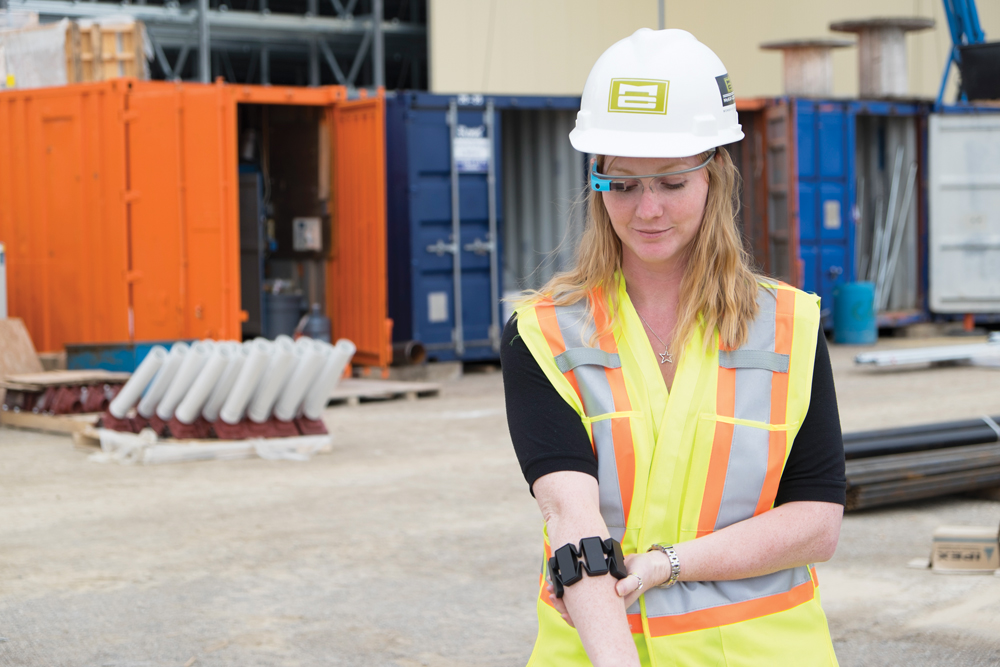Bridgit, a Canadian startup company devoted to improving efficiency in the construction industry, recently launched Groundbreaker. The interactive application combines the smartglass app for Bridgit’s flagship Closeout software, which manages deficiencies in construction projects, with Thalmic Labs’ Myo armband, which can recognize subtle hand and finger gestures.
Mallorie Brodie, Co-founder of the Kitchener, Ont., software developer, says that she and her Co-founder, Lauren Hasegawa, conferred with 500 stakeholders before deciding on the hands-free solution. “We were not convinced that smartglass technology alone was a practical solution, especially if it required audio commands on noisy job sites,” she says.
Combining the smartglass visual device with the motion-sensing armband means users don’t have to fiddle with their smartphones to shoot a photo of a defect in a wall system. Nor do they have to rely on using voice commands, which can slow down information retrieval in the field. They can just point and click, and the data or image can be transferred instantly to the correct person on site who can fix the problem.
Groundbreaker retails for $1,499. Here’s a short video demonstration of how it works.
Read about more innovations from BD+C's 2014 Great Solutions Report
Related Stories
| Dec 12, 2011
Mojo Stumer takes top honors at AIA Long Island Design Awards
Firm's TriBeCa Loft wins "Archi" for interior design.
| Dec 10, 2011
10 Great Solutions
The editors of Building Design+Construction present 10 “Great Solutions” that highlight innovative technology and products that can be used to address some of the many problems Building Teams face in their day-to-day work. Readers are encouraged to submit entries for Great Solutions; if we use yours, you’ll receive a $25 gift certificate. Look for more Great Solutions in 2012 at: www.bdcnetwork.com/greatsolutions/2012.
| Dec 10, 2011
Energy performance starts at the building envelope
Rainscreen system installed at the west building expansion of the University of Arizona’s Meinel Optical Sciences Center in Tucson, with its folded glass wall and copper-paneled, breathable cladding over precast concrete.
| Dec 10, 2011
Turning Balconies Outside In
Operable glass balcony glazing systems provide solution to increase usable space in residential and commercial structures.
| Dec 10, 2011
BIM tools to make your project easier to manage
Two innovations—program manager Gafcon’s SharePoint360 project management platform and a new BIM “wall creator” add-on developed by ClarkDietrich Building Systems for use with the Revit BIM platform and construction consultant—show how fabricators and owner’s reps are stepping in to fill the gaps between construction and design that can typically be exposed by working with a 3D model.
| Dec 9, 2011
BEST AEC FIRM 2011: Chapman Construction/Design
Taking sustainable practices to heart.
| Dec 9, 2011
BEST AEC FIRMS 2011: EYP Architecture & Engineering
Expertise-Driven Design: At EYP Architecture & Engineering, growing the business goes hand in hand with growing the firm’s people.
















